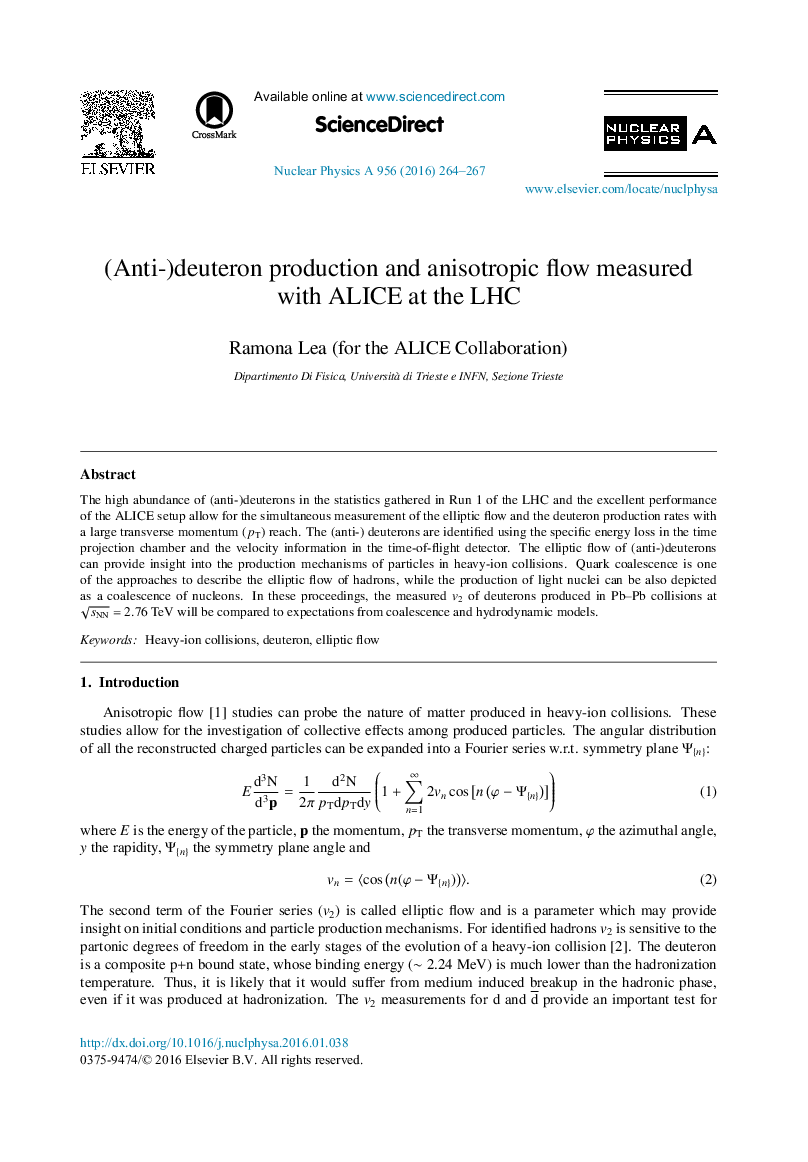| Article ID | Journal | Published Year | Pages | File Type |
|---|---|---|---|---|
| 5494173 | Nuclear Physics A | 2016 | 4 Pages |
Abstract
The high abundance of (anti-)deuterons in the statistics gathered in Run 1 of the LHC and the excellent performance of the ALICE setup allow for the simultaneous measurement of the elliptic flow and the deuteron production rates with a large transverse momentum (pT) reach. The (anti-) deuterons are identified using the specific energy loss in the time projection chamber and the velocity information in the time-of-flight detector. The elliptic flow of (anti-)deuterons can provide insight into the production mechanisms of particles in heavy-ion collisions. Quark coalescence is one of the approaches to describe the elliptic flow of hadrons, while the production of light nuclei can be also depicted as a coalescence of nucleons. In these proceedings, the measured v2 of deuterons produced in Pb-Pb collisions at sNN=2.76Â TeV will be compared to expectations from coalescence and hydrodynamic models.
Related Topics
Physical Sciences and Engineering
Physics and Astronomy
Nuclear and High Energy Physics
Authors
Ramona Lea, ALICE Collaboration ALICE Collaboration,
